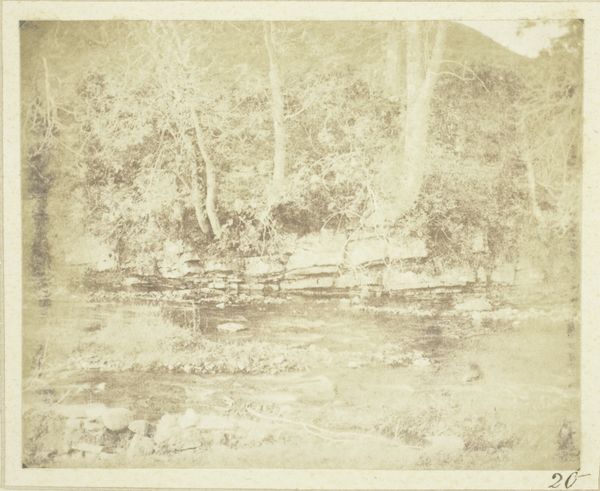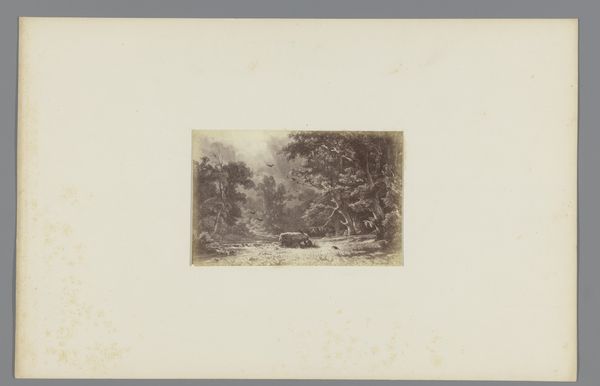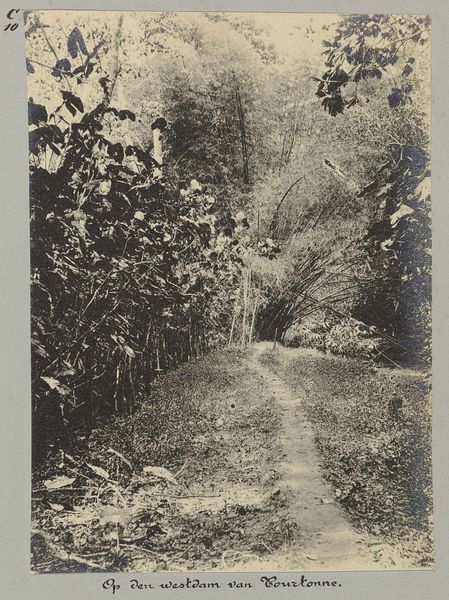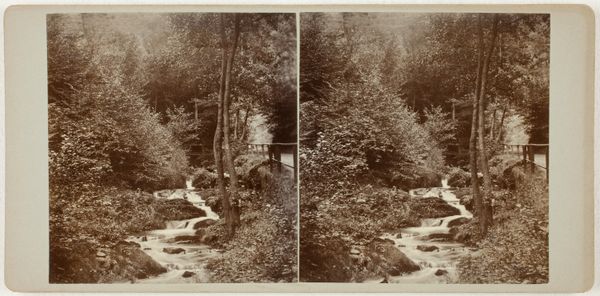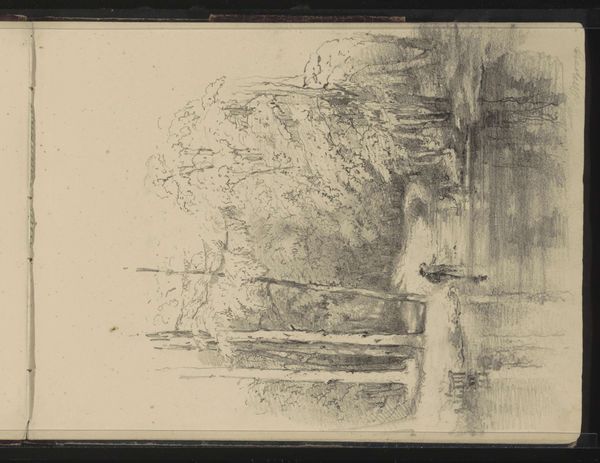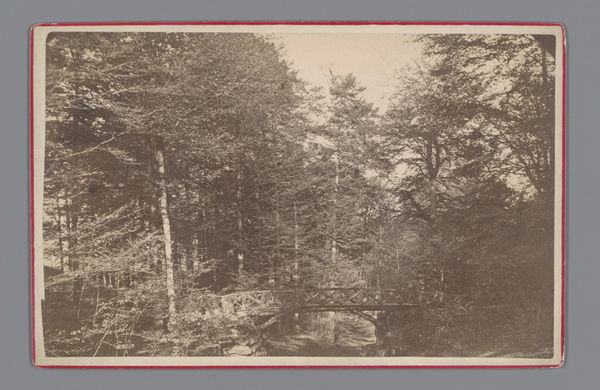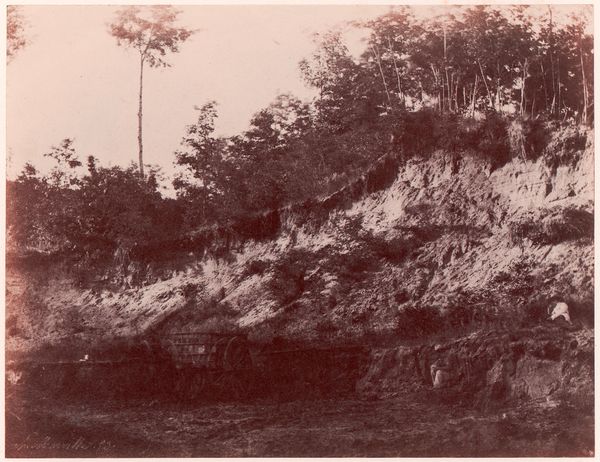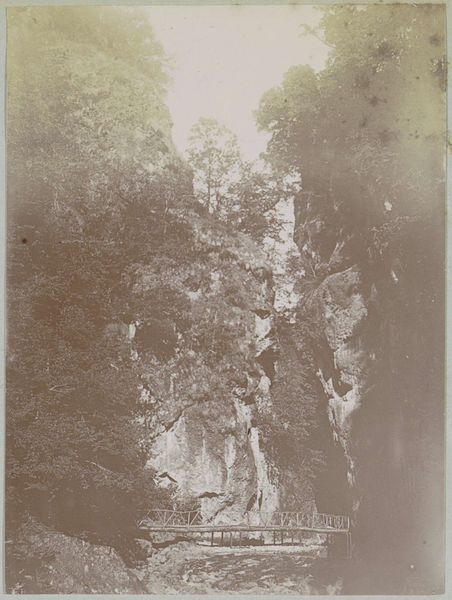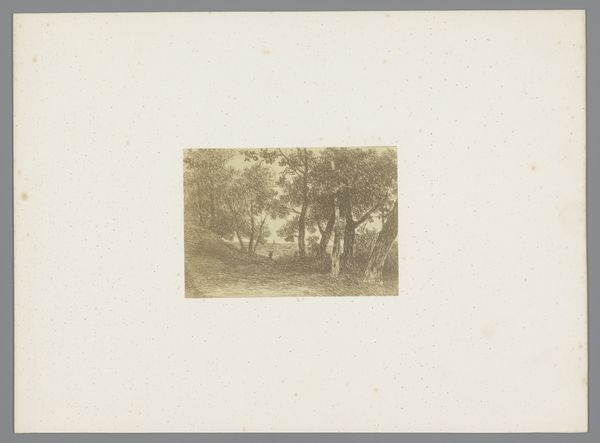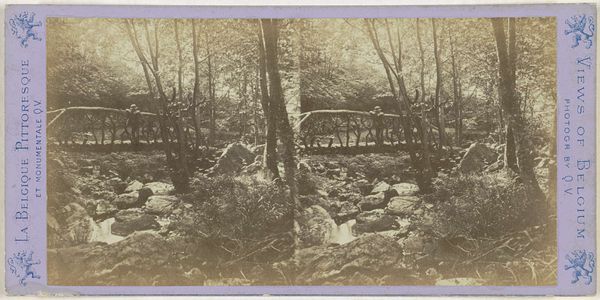
plein-air, photography
#
plein-air
#
landscape
#
photography
#
realism
Dimensions: height 84 mm, width 51 mm
Copyright: Rijks Museum: Open Domain
Curator: Looking at this photograph, "Gezicht op een fonteintje in landschap," taken by Paul Emile Chappuis sometime between 1870 and 1900, I'm struck by its stillness. The photographer appears to have been captivated by a tranquil landscape. Editor: Yes, tranquil feels right. But something also strikes me as a bit melancholy, maybe it's the sepia tone. What I notice is how the water from the fountain contrasts with the solidity of the rock. It feels like the brief upward arc of social mobility of an underclass destined to fall once again in its place, if you consider photography to have developed alongside colonial capitalism. Curator: I think that's a very astute observation regarding social implications. Landscape photography often functioned to reinforce ideas about ownership and access to natural resources, especially in newly "discovered" territories. But perhaps here we are also seeing a commentary on the picturesque, a deliberate crafting of nature to fit aesthetic ideals? Editor: Certainly the picturesque plays a role, no matter how "realist" the artwork purports to be. Fountains are inherently artificial, controlling nature's flow, imposing an ideal on the land. They can speak of both wealth and dominance, but also vulnerability in times of drought and social crisis. Who has access to such resources? Who controls it? Curator: So, do you read the choice of the plein-air technique here, photographing outside and "on location", as the photographer taking a critical approach towards landscape representation itself, using the artistic device in a way that exposes and even challenges its assumptions? Editor: Exactly. It positions the photograph, and maybe the viewer, in an ambiguous position, forcing us to consider the tensions inherent in idealizing the natural world at a time of rapid social and environmental change and the false promise of its apparent 'abundance' to which so many still have so little to no access. Curator: Thinking about Chappuis and the development of this photograph from a historical viewpoint, its commentary is quite powerful. It really shows how the seemingly benign capturing of the natural world carries intricate societal meanings. Editor: Absolutely. Seeing this, I realize once again how crucial it is to dissect art in light of societal factors; it provides us with profound insights.
Comments
No comments
Be the first to comment and join the conversation on the ultimate creative platform.
